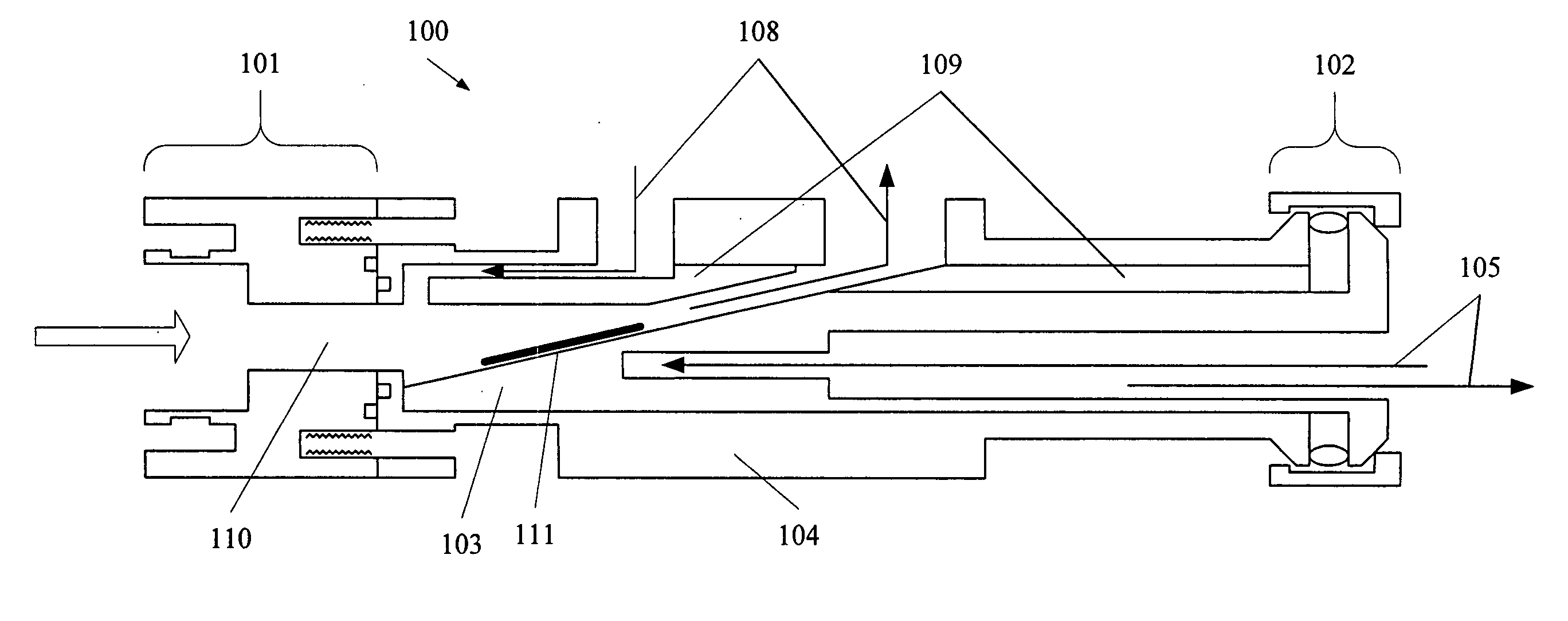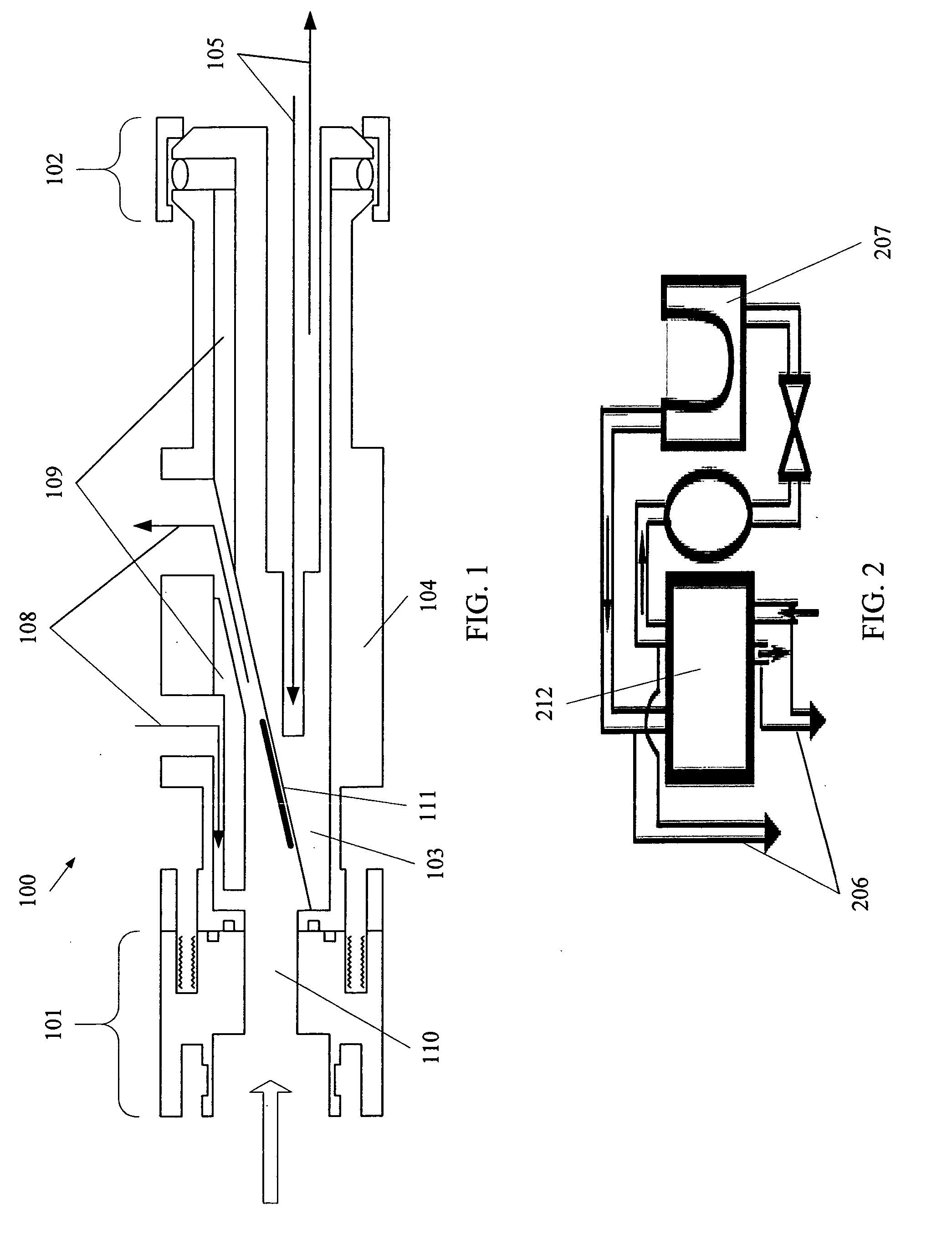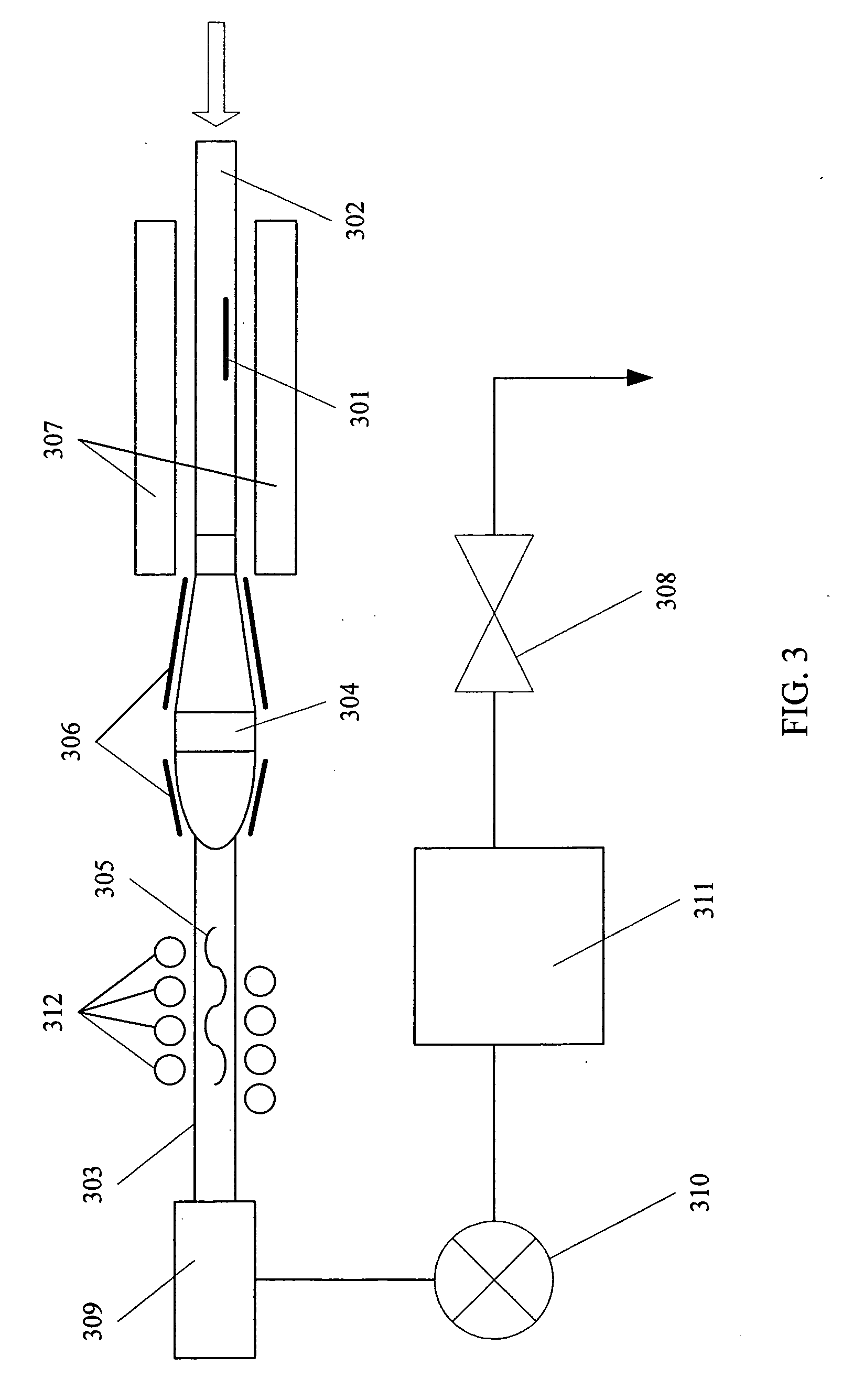Systems and methods for the cyclotron production of iodine-124
a technology of cyclotron and iodine, which is applied in the direction of chemical to radiation conversion, nuclear engineering, and conversion outside the reactor/acceleration, etc., can solve the problems of low reaction yield, low reaction yield, and general undeveloped efforts to produce this radiohalogen, so as to enhance the physical properties of the target, low stopping power, and easy production
- Summary
- Abstract
- Description
- Claims
- Application Information
AI Technical Summary
Benefits of technology
Problems solved by technology
Method used
Image
Examples
Embodiment Construction
[0023] The present invention provides novel aluminum telluride targets for use in the low energy cyclotron production of 124I and to cyclotron systems and methods that utilize the aluminum telluride targets. The description that follows provides a non-limited example of a method for the production of an aluminum telluride target and a non-limiting example of a system and method that may be used to produce 124I from the target.
[0024] Aluminum Telluride Synthesis and Target Preparation
[0025] Tellurium (Te) metal has eight stable isotopes (120Te, 122Te, 123Te, 124Te, 125Te, 126Te, 128Te, and 130Te) with 124Te making up 4.6% of the natural abundance in nature. Production of 124I by way of the (p,n) nuclear reaction requires tellurium enriched in 124Te (i.e., tellurium that has been enriched through human intervention) to minimize contributions from long-lived contaminants. These contaminates result from reactions with improperly enriched 124Te compounds containing traces of 125Te and ...
PUM
 Login to View More
Login to View More Abstract
Description
Claims
Application Information
 Login to View More
Login to View More - R&D
- Intellectual Property
- Life Sciences
- Materials
- Tech Scout
- Unparalleled Data Quality
- Higher Quality Content
- 60% Fewer Hallucinations
Browse by: Latest US Patents, China's latest patents, Technical Efficacy Thesaurus, Application Domain, Technology Topic, Popular Technical Reports.
© 2025 PatSnap. All rights reserved.Legal|Privacy policy|Modern Slavery Act Transparency Statement|Sitemap|About US| Contact US: help@patsnap.com



